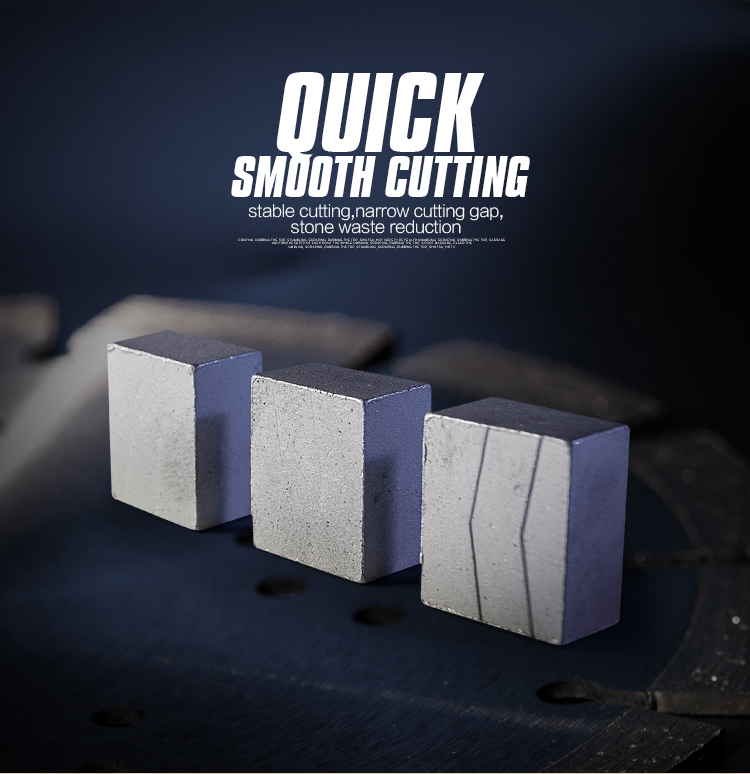There are a few things to consider when choosing a diamond segment:
(1) Suitable manufacturing process conditions;
(2) The ability to control diamonds;
(3) Coordination and synchronous wear of diamond and separation agent for different processing objects;

(4) It can not only increase the life of the segment, but also increase the protruding height of the diamond on the segment surface, forming a larger cutting space and improving cutting efficiency. Improving chemical retention means improving the moisture and bonding properties of the separation agent to the diamond. Strong carbide constituent elements such as Ti and Cr can induce the separation agent to wet the diamond and combine with the diamond to form carbide to increase the separation force. Of course, these elements will also corrode diamond, easily causing coarse carbides, cracks or cavities, and deteriorating cutting performance.
(5) The cost is reasonable. Separating agents have mechanical and chemical retention of diamond. The mechanical holding force is mainly determined by the elastic modulus of the release agent. Elements that increase the elastic modulus of the material, such as Cr, Mn, W or WC hard phases, can improve retention while improving wear resistance. Of course, excessive wear resistance is not conducive to diamond cutting. Chemical retention is created by the “welding,” or chemical bonding, of the diamond with the separating agent.
 WANLONG
WANLONG
